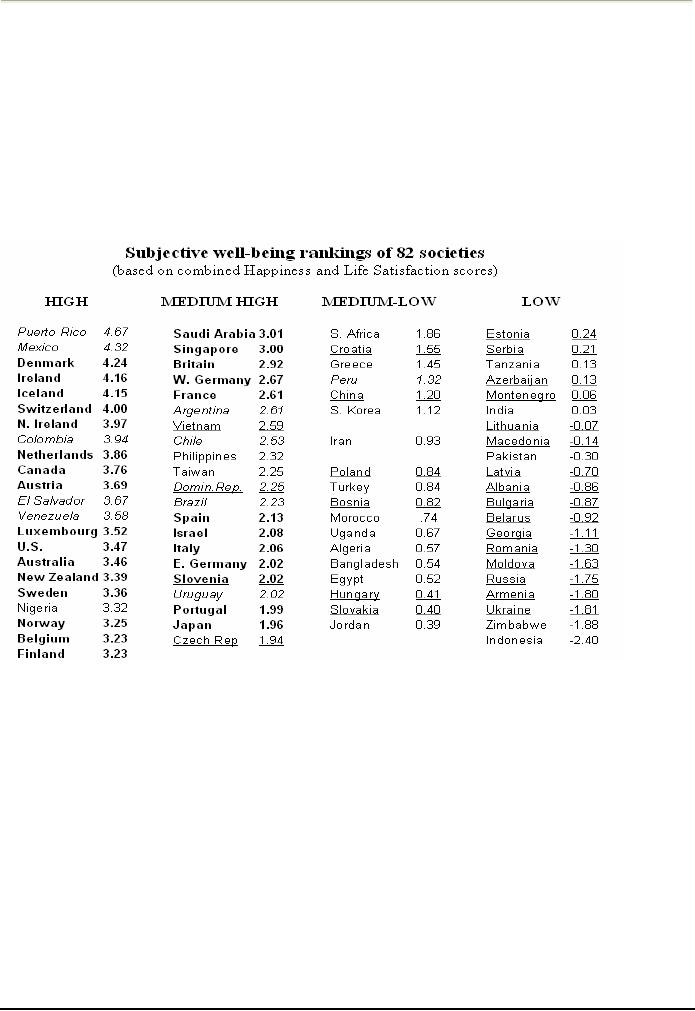 |

Organizational
Psychology (PSY510)
VU
LESSON
24
HOPE
Rick
Synder defines hope as "a positive
motivational state; having will power
and way power"
Snyder
traced
the origins of his thinking to earlier
work by Averill, Catlin, and
Chon (1990) and Stotland
(1969), in
which
hope was cast in terms of
people's expectations that
goals could be achieved.
According to Snyder's
view,
goal-directed expectations are
composed of two separable
components. The first is
agency, and it
reflects
someone's determination that
goals can be achieved. The
second is identified as pathways:
the
individual's
beliefs that successful
plans can be generated to
reach goals. The second
component is Snyder's
novel
contribution, not found in
other formulations of optimism as an
individual difference.
Hope
so defined is measured with a
brief self-report scale (Snyder et
al., 1996). Representative
items, with
which
respondents agree or disagree, include
the following:
1.
I energetically pursue my goals.
[agency]
2.
There are lots of ways around any
problem. [Path ways]
Responses
to items are combined by averaging.
Scores have been examined
with respect to goal
expectancies,
perceived control, self-esteem,
positive emotions, coping, and
achievement, with results
as
expected
(e.g., Curry, Snyder, Cook,
Ruby, & Rehm, 1997; Irving,
Snyder, & Crowson,
1998).
·
Hope
is considered to be positively related to
a number of factors such
as:
·
Academic
achievement: The more
hopeful the candidate, the higher the
achievement.
·
Athletic
achievement: The more
hopeful the athlete, the better the
performance.
·
Emotional
health: Hopeful people have better
emotional stability and
overall emotional health.
·
Ability
to cope with illness:
Hopeful people fall less
sick.
·
And
hardships: Hopeful people cope better
with hardships and difficult
situations.
Happiness/Subjective
Well Being (SWB)
Subjective
well-being refers to all of the various
types of evaluation, both positive
and negative, that
people
make
of their lives. It includes reflective
cognitive evaluation, such as life
satisfaction and work
satisfaction,
interest
and engagement and effective
reactions to life events,
such as joy and sadness.
Thus, subjective
well-being
is an umbrella term for the different valuations
people make regarding their
lives, the events
happening
to them, their body and
mind, and the circumstances in
which they live. Although,
well-being
and
ill-being are "subjective" in the
sense that they occur within
a person's experience, manifestations
of
subjective
well-being and ill-being can be
observed objectively in verbal and
non-verbal behavior,
actions,
biology,
attention, and memory. The term
well-being is often used instead of
subjective well-being because
it
avoids any suggestion that
there is something arbitrary or
unknowable about eh concepts
involved.
Three
factors related to SWB
include:
Personality:
It is
one of the predictors of SWB.
Our
goals: Making
progress towards goals is
related to SWB.
Our
coping:
People tend to return to
their original level of SWB after coping
with different
adverse
situations.
Diener
and colleagues have
identified the following dimensions of
SWB:
Life
satisfaction
Life
satisfaction represents a report of
how a respondent evaluates or
appraises his or her life
taken as a
whole.
It is intended to represent a broad, reflective
appraisal the person makes of
his or her life. The
term
life
can be defined as all areas
of a person's life at a particular point
in time, or as an integrative judgment
about
the person's life since
birth, and this distinction is
often left ambiguous in current
measures.
Satisfaction
with important
domains
These
are judgments people make in evaluation
major life domains, such as
physical and mental
health,
work,
leisure, social relationships,
and family. Usually people indicate how
satisfied they are with
various
areas,
but they might also indicate
how much they like their
lives in each area, how
close to the ideal they
are
in each area, how much
enjoyment they experience in each area,
and how much they would
like to
change
their lives in each
area.
Positive
affect
Positive
affect denotes pleasant moods
and emotions, such as joy
and affection. Positive or
pleasant
emotions
are part of subjective well-being
because they reflect a person's reactions
to events that signify to
the
person that life is
proceeding in a desirable way.
Major categories of positive or
pleasant emotions
84

Organizational
Psychology (PSY510)
VU
include
those of low arousal (e.g.,
contentment), moderate arousal (e.g.,
pleasure), and high arousal
(e.g.,
euphoria).
They include positive reactions to
others, positive reactions to
activities, and general
positive
moods.
Negative
affect
Negative
affect includes moods and emotions
that are unpleasant, and
represent negative responses
people
experience
in reaction to their live, health, events
and circumstances. Major forms of
negative or unpleasant
reactions
include anger, sadness, anxiety and
worry, stress, frustration,
guilty and shame, and
envy. Other
negative
states, such as loneliness, or
helplessness, can also be
important indicators of ill-being.
Although
some
negative emotions are to be expected in
life and can be necessary
for effective functioning,
frequent
and
prolonged negative emotions indicate that
a person believes his or her
life proceeding badly.
Extended
experiences
of negative emotions can interfere
with effective functioning, as well as
make life unpleasant.
In
a research in 42 countries, involving
7240 subjects, 94% reported SWB to be
more important than
money.
People in poor nations show
average SWB scores close
to, or slightly below, the neutral
point.
Countries
that are wealthier possess
greater freedom and human rights,
and an emphasis on
individualism,
and
have citizens with higher
SWB (Diener, Diener, &
Diener, 1995) -- scoring
between slight and strong
SWB.
Surprisingly, other factors such as the
economic growth and the cultural
homogeneity of a society do
not
correlate with average
levels of SWB.
Although
reports of SWB are higher in
individualistic nations, the cultural dimension of
individualism
versus
collectivism produces complex effects.
Individualistic cultures are
those that emphasize
the
individual
-- her autonomy, motives,
and so forth. In contrast, in
collectivist cultures, the group (e.g.,
the
family)
is often considered more
important than the individual. There is
an emphasis on harmonious group
functioning,
and the belief that the
individual's motives and emotions should
be secondary. In individualistic
nations,
reports of global well-being are high,
and satisfaction with
domains such as marriage are
extremely
high.
Nevertheless, suicide rates
and divorce rates in these
same individualistic nations are
also high (Diener
&
Suh, in press-b). It may be
that people in individualistic nations
make more attributions for
events
internally
to themselves, and therefore the effects
are amplified when things go either well
or badly. It might
also
be that individualists are more
able to follow their own
interests and desires, and
therefore more often
find
self-fulfillment. At the same time, there
may be less social support
in individualistic cultures
during
troubled
periods. Furthermore, individualists are
more likely to get divorced, or
even commit suicide, if
things
do not go well. Thus, individualists may
experience more extreme
levels of SWB,
whereas
collectivists
may have a safer structure
that produces fewer people who
are very happy but perhaps
also
fewer
people who are isolated and
depressed. Our data support this
line of reasoning in that
not only do
individualistic
nations have higher suicide and divorce
rates, but they also have
higher reports of SWB.
In
adults, optimism, self-esteem, and
extraversion are several of the personality traits
possessed by happy
people.
For example, informant reports of
extraversion and sociability correlate
with the amount of pleasant
affect
that nursing home residents display.
Extraverts in a national probability
sample in the U.S.A.
who
lived
in a variety of different circumstances
experienced higher SWB (Diener,
Sandvik, Pavot, & Fujita,
1992).
It is useful, however, to differentiate the
separate components of SWB.
The two major forms of
affect,
pleasant and unpleasant,
appear to be related to the separate
personality factors of extraversion
and
neuroticism,
respectively. Although extraverts
experience more pleasant affect, they do
not experience a
predictable
level of unpleasant affect. Neurotics are
very likely to experience high
levels of unpleasant affect,
but
are less predictable when it comes to
levels of pleasant affect. When
measurement error is
controlled,
the
relations between these two
facets of affect and these
two personality dimensions are strong in
Western
nations.
What is not yet known is
whether extraversion predicts pleasant affect to the
same extent in
different
cultures such as in India or
Nepal.
Extraversion
and neuroticism are cardinal traits
that are part of a system of
personality labelled the Five
Factor
Model ( e.g., McCrae &
Costa, 1985). Two more
traits in this model, Agreeableness
and
Conscientiousness,
are correlated moderately
with SWB. Agreeableness and
Conscientiousness might
relate
to
SWB because of environmental
rewards. That is, in many or
most environments, people who
are
agreeable
and conscientious may
receive more positive
reinforcements from others,
and therefore may
experience
higher SWB. For example, a
conscientious person might
receive better grades in school,
better
pay
at work, and may even be
more likely to have a good
marriage. Thus, although
conscientiousness might
not
directly produce greater
SWB, it might result in
receiving rewards that heighten
one's SWB. If
85

Organizational
Psychology (PSY510)
VU
agreeableness
and conscientiousness are
related to SWB because of the
reinforcement structure, their
relation
to SWB may differ across
cultures.
The
fifth cardinal trait in the
Five Factor Model, Openness,
may relate to emotional intensity (having
both
intense
unpleasant and pleasant emotions) rather
than to hedonic balance. Larsen
and Diener (1987)
suggest
that
emotional intensity is a personality trait
that may influence the quality of
one's happiness -- whether
one
is likely to be elated versus
contented, or is distressed versus
melancholic.
SWB
is related to job satisfaction.
Job satisfaction and SWB
have a direct relationship. On the other
hand,
unemployment
causes lower SWB.
The
usual method of measuring
SWB is through self-report surveys in
which the respondent judges
and
reports
his life satisfaction, the
frequency of her pleasant affect, or the
frequency of his
unpleasant
emotions.
High-income
countries are shown in bold
face type. All 28 high-income countries
(in bold
type) rank
high
or
medium-high on subjective well-being; and
all 10 Latin American countries
(in italics)
except Peru also
rank
high or medium-high. All 25 ex-communist
countries (names underlined) except
Vietnam, Slovenia
and
Czech Republic are low or medium-low (the
median ex-communist country
has a negative score);
and
all
ten ex-Soviet countries are
Low (eight of the ten have negative
scores).
REFERENCES
·
Allman,
A. (1990). Subjective well-being of people
with disabilities: Measurement
issues. Unpublished
master's
thesis, University of
Illinois.
·
Andrews,
F. M., Robinson, J. P. (1991). Measures
of subjective well-being. In J. P. Robinson, P.
Shaver,
and
L. Wrightsman (Eds.) Measures of
Social Psychological Attitudes.
San Diego, CA: Academic
Press.
·
Beck,
A. T. (1967). Depression: Clinical,
experimental, and theoretical aspects.
New York: Hoeber.
·
Brickman,
P., Coates, D., & Janoff-Bulman, R.
(1978). Lottery winners and
accident victims: Is
happiness
relative? Journal of Personality
and Social Psychology, 36,
917-927.
·
A
Global Projection of Subjective
Well-being:
http://www.le.ac.uk/pc/aw57/world/sample.html
·
Diener-Guidelines
for National
Indicators.doc:www.wam.umd.edu/~cgraham/Courses/Docs/PUAF698R-Diener-
Guidelines%20for%20National%20Indicators.pdf
86

Organizational
Psychology (PSY510)
VU
·
Subjective
well-being rankings of 81
societies:
http://www.worldvaluessurvey.org/Upload/5_wellbeingrankings.doc
FURTHER
READING
·
Recent
findings on subjective well
being
http://
www.psych.uiuc.edu/~ediener/hottopic/paper1.html
·
Researcher
on Subjective Well-Being. Department of Psychology ·
University of Illinois at Urbana-
Champaign.
Personal Information: http://www.psych.uiuc.edu/~ediener
·
The
Anatomy of Subjective Well-being:
ideas.repec.org/p/dgr/uvatin/20020022.html
·
Subjective
well being: http://www.krueger.princeton.edu/Subjective.htm
·
A
definition of subjective well
being:
http://sprott.physics.wisc.edu/Lessons/paper263/tsld002.htm
87
Table of Contents:
- INTRODUCTION TO ORGANIZATIONAL PSYCHLOGY:Hawthorne Effect
- METHODOLOGIES OF DATA COLLECTION:Observational method, Stability of Measures
- GLOBALIZATION:Aspects of Globalization, Industrial Globalization
- DEFINING THE CULTURE:Key Components of Culture, Individualism
- WHAT IS DIVERSITY?:Recruitment and Retention, Organizational approaches
- ETHICS:Sexual Harassment, Pay and Promotion Discrimination, Employee Privacy
- NATURE OF ORGANIZATIONS:Flat Organization, Neoclassical Organization Theory
- ORGANIZATIONAL CULTURE:Academy Culture, Baseball Team Culture, Fortress Culture
- CHANGING ORGANIZATIONAL CULTURE:Move decisively, defuse resistance
- REWARD SYSTEMS: PAY, Methods of Pay, Individual incentive plan, New Pay Techniques
- REWARD SYSTEMS: RECOGNITION AND BENEFITS, Efficiency Wage Theory
- PERCEPTION:How They Work Together, Gestalt Laws of Grouping, Closure
- PERCEPTUAL DEFENCE:Cognitive Dissonance Theory, Stereotyping
- ATTRIBUTION:Locus of Control, Fundamental Attribution Error
- IMPRESSION MANAGEMENT:Impression Construction, Self-focused IM
- PERSONALITY:Classifying Personality Theories, Humanistic/Existential
- PERSONALITY ASSESSMENT:Standardized, Basic Categories of Measures
- ATTITUDE:Emotional, Informational, Behavioural,Positive and Negative Affectivity
- JOB SATISFACTION:The work, Pay, Measurement of Job Satisfaction
- MOTIVATION:Extrinsic motive, Theories of work motivation, Safety needs
- THEORIES OF MOTIVATION:Instrumentality, Stacy Adams’S Equity theory
- MOTIVATION ACROSS CULTURES:Meaning of Work, Role of Religion
- POSITIVE PSYCHOLOGY:Criticisms of ‘Traditional’ Psychology, Optimism
- HOPE:Personality, Our goals, Satisfaction with important domains, Negative affect
- EMOTIONAL INTELLIGENCE:EI IS Related To Emotions and Intelligence
- SELF EFFICACY:Motivation, Perseverance, Thoughts, Sources of Self-Efficacy
- COMMUNICATION:Historical Background, Informal-Formal, Interpersonal Communication
- COMMUNICATION (Part II):Downward Communication, Stereotyping Problems
- DECISION MAKING:History, Personal Rationality, Social Model, Conceptual
- PARTICIPATIVE DECISION MAKING TECHNIQUES:Expertise, Thinking skills
- JOB STRESS:Distress and Eustress, Burnout, General Adaptation Syndrome
- INDIVIDUAL STRESSORS:Role Ambiguity/ Role Conflict, Personal Control
- EFFECTS OF STRESS:Physical Effects, Behavioural Effects, Individual Strategies
- POWER AND POLITICS:Coercive Power, Legitimate Power, Referent Power
- POLITICS:Sources of Politics in Organizations, Final Word about Power
- GROUPS AND TEAMS:Why Groups Are Formed, Forming, Storming
- DYSFUNCTIONS OF GROUPS:Norm Violation, Group Think, Risky Shift
- JOB DESIGN:Job Rotation, Job Enlargement, Job Enrichment, Skill Variety
- JOB DESIGN:Engagement, Disengagement, Social Information Processing, Motivation
- LEARNING:Motor Learning, Verbal Learning, Behaviouristic Theories, Acquisition
- OBMOD:Applications of OBMOD, Correcting Group Dysfunctions
- LEADERSHIP PROCESS:Managers versus Leaders, Defining Leadership
- MODERN THEORIES OF LEADERSHIP PROCESS:Transformational Leaders
- GREAT LEADERS: STYLES, ACTIVITIES AND SKILLS:Globalization and Leadership
- GREAT LEADERS: STYLES, ACTIVITIES AND SKILLS:Planning, Staffing